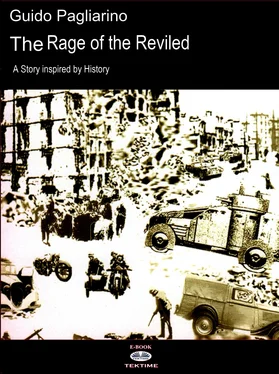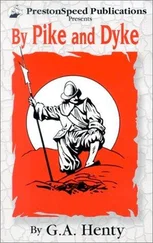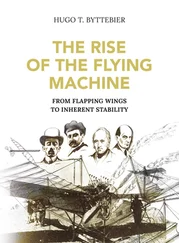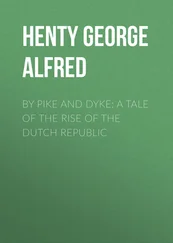That morning, however, the first gunshot had not been preordained. On the contrary it had ignited spontaneously at the Vomero by relatives of people that had been rounded up. They had stopped an off-road Kübelwagen Typ 82 of the Wehrmacht, killing the marshal who was driving it and putting the other soldiers to flight; other non-organized actions had taken place around Naples soon after and, here and there, carabinieri on patrol and officers of Public Security and the Guardia di Finanza had spontaneously joined the rebel groups.
Shortly before the start of school lessons, ten unarmed high school students had thrown themselves, on the spur of the moment, at three Germans who were on patrol in their Kübelwagen, proceding at walking pace. They had forced them to get out, disarmed them and set fire to their off-road vehicle, while the Alemannic threesome had fled. Those Germans, however, had raised the alarm with their department, and two German platoons had arrived with the support of a powerful sdKfz 231 Schwere Panzerspähwagaen 6 rad armoured car. The ten young people had taken refuge and barricaded themselves in the nearby San Martino Museum and the armored vehicle had begun to strafe the windows, as news of the students’ action and the danger they were in was spreading through Naples, echo after echo.
Among the actions which, instead, the Resistance had prepared, were first of all the well-known attack on the column of German grenadiers in Via Medina and the action of a platoon of carabinieri who, with their colonel commander’s approval had headed to the San Martino Museum aboard a Lancia CM truck 23to fight the Germans were besieging the rebellious students with their short 91muskets and SRCM 35 24hand grenades. Some civilians in the area had spontaneously placed themselves at the side of the Benemerita military.
That same morning, still in response to the democratic leaders’ previous order, one hundred freedom fighters had attacked Castel Sant'Elmo. Inside, among the Germans barricaded there, was the tired platoon of grenadiers who had remained on guard at the armory the whole night, without being relieved because, as we know, the fresh platoon coming on duty had been engaged in combat in Via Medina.
As the pressure of events increased, the post commander, Colonel Scholl, had moved his powerful Tiger- and Panther-class panzers, but a number of them had been blocked and set on fire by rioters, thanks to a few panzerfaust 25stolen from the enemy, American bazookas and Molotov cocktails.
Chapter 5
As the gun fight in Via Medina continued, the head of Police Headquarters, Dr. Carmelo Pelluso, having moved away from the window of his office on the first floor, from which he had cautiously watched the German platoon engaged in combat, was about to call his Deputy Commissioners by intercom to give orders regarding it, when the phone on his desk had started ringing.
At the other end of the line was his direct superior Dr. Soprano. The Prefect had reported to the Chief Commissioner that armed conflict had begun in several areas of Naples and had told him the news that the American armed 5th and the 6th Corps as well as the British 10th were attacking the Germans in the direction of Naples and Avellino and the German units in the field were beginning to fall back, bypassing the Neapolitan city, to consolidate their lines further north. He had concluded by leaving the Commissioner in Chief free to decide which concrete orders to give his men, but with the constraint of not forcing them to fight the Germans.
Dr. Pelluso had not obeyed completely: after saying goodbye to the Prefect, he had indeed commanded his deputies to give their subordinates the simple invitation, not the order, to join the population against the Germans, but he had added decisively: "Tell everyone that I personally am on the insurgents’ side; however anyone, for mere hypothesis, who does not want to follow me will not be in any trouble; he will though have to hand over his gun and remain clonsigned to Police Headquarters in the holding cells."
Carmelo Pelluso was not an anti-fascist of the first hour: like many others, including Deputy Commissioner Vittorio D'Aiazzo, he had carried the Fascist Party card until July 25, mandatory in reality for public officials. He had, however, already joined the Action Party at the end of that month and had not changed sides after the German occupation and the very recent return of Mussolini to the Government of the part of Italy not occupied by the Allied armies. On the contrary, he was now actively collaborating with the leaders of the anti-fascist parties of the Single Revolutionary Front and, first and foremost, with one of its leading exponents, who was also his personal friend, the azionista 26Professor Adolfo Omodeo. On September 1, the latter had been appointed as rector of the University of Naples Federico II by the Badoglio Government. From there he fueled the rebellion against Nazi-fascism among the intellectuals, together with the liberal Benedetto Croce.
The policemen loyal to Mussolini, a commissioner and a dozen agents, graduates and non-commissioned officers had been disarmed and, under the direct control of the chief commissioner, had been locked up, respectfully but under armed escort, in the holding cells. Pelluso had inquired if there were already other prisoners in those rooms and had been told that the only one in a holding cell was a certain, real or presumed, Gennaro Esposito, suspected of the murder of a prostitute named Rosa Demaggi. The commissioner in chief had looked very disappointed.
In those same minutes, Vittorio D'Aiazzo was leaving the barracks from the driveway, at the command of an old, obsolete armored vehicle belonging to Police Headquarters. He considered himself a Christian demoliberal in pectore even though, after tossing away the Fascist card on July 25, he had not joined either the Catholic party or the Liberal party and, unlike the chief commissioner Pelluso, had not made contact with men of the newborn Resistance. On the other hand, that was how it was for the great majority of those Italians who would then fight Nazi-fascism, for over a year and a half, until the end of the war.
Brigadier Marino Bordin had climbed aboard the armored car with Vittorio D'Aiazzo even though, like him, he was tired out from the sleepless night. He was a courageous but rough man and, despite not having political ideas, he harbored deep animosity for the Germans because of their contemptuous arrogance towards the Italians. Two police officers had also boarded the armored vehicle, Tertini and Pontiani, and the ordinary marshal Aroldo Bennato, head mechanic of the police headquarters repair shop, who had placed himself at the wheel. All three were fresh after a night of rest, and had just come on duty.
The armored car, or to be precise the machine gun armoured car as it was catalogued, was a tool from the First World War, an Ansaldo Lancia IZ equipped with three 7.92 mm heavy Maxim machine guns. Only this armored car and two similar to it had not been confiscated from Police Headquarters by the occupants, having been judged no longer of any use because obsolete, unlike the most modern armored cars 611 FIAT 1934/35 and AB FIAT 1940/43 that the Teutonic tank drivers had willingly added to their armored vehicles. The Ansaldo Lancia IZ was a model which was slow and hard to maneuver. But it had considerable firepower, and in fact, when it came into service at the end of the First World War, it had made immediate destruction among the Austrians; moreover, contrary to what the Germans must have thought, the three twin armored cars had been kept in perfect efficiency thanks to periodic reviews by the workshop manager and his mechanics and, for the machine guns, by the gunsmiths.
With the five policemen on board, the armored vehicle had noisily entered Via Medina, emitting smoke, about seventy yards behind the Germans who were still intent on firing Garand rifles on the rioters, while the patriots’ BAR machine gun was now silent with its operator slumped face-down over it, dead. The number of attackers still alive had been reduced to less than half, since the Germans had a so-called Hitler's saw, a tremendous 7.92 mm MG 42 machine gun, the best in the world for performance and lightness. In fact, even today in the 2000s, the model is supplied to NATO 27; and for every ten bullets inserted into the tapes by the Teutonic machine gunners, one was an armor-piercing type, capable of breaching the crumbling walls and piles of rubble of the two bombed houses, from the cover of which the patriots were firing. Some Germans too were dead on the ground, a small part of their platoon.
Читать дальше












